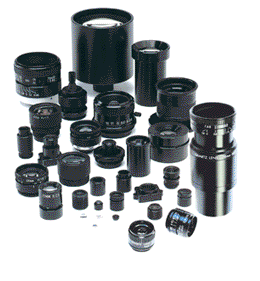High resolution lenses for machine vision — standard and custom lens design
The Technology Behind Infrared Cameras
High Resolution Lenses for machine vision, instrumentation, inspection and vibration-sensitive applications. Standard and custom hi-res lens assemblies.

Infrared Cameras
All living and many inanimate objects emit infrared radiation when close to room temperature. The infrared radiation increases when the object is warmer than the surrounding air temperature. Through the use of a thermal imaging camera and its thermographic imaging technology the application converts ambient infrared radiation into visible light displays. Through the use of infrared technologies, objects can be seen clearly depending on the temperature variance.
Several fields such as firefighting, military, electronics, and surveillance utilize the technologies associated with infrared cameras. In the case of firefighting, even in the midst of a fire, these infrared cameras can read information that allows a firefighter to see whether an individual is still inside the home. Electricians and providers of home insulation can show homeowners, through the use of infrared technologies, where there are heat leaks in the house.
Medical diagnosticians use infrared video on both animals and humans. This technology is not new in the medical field and has been used for more than a quarter of a century. Its effectiveness has been proven as it is a sensitive diagnostic tool for use in nervous system disorders, back and neck problems, breast cancer, arthritis and soft tissue injuries. The infrared camera is a non-invasive technique and patients aren’t exposed to radiation or other harmful elements.
How it works? Through the use of thermographic technologies, there is a baseline of the “normal pattern of thermal imaging present in a human body,” the camera highlights deviations from the norm. These deviations are used by physicians to diagnosis various pathological phenomena. A “hot spot” on a patient’s body signifies inflammation of the skin and a “cold spot” indicates an area where there is reduced blood flow. If there is inflammation in the joints or tendons, these will be apparent through the use of thermographic technologies much more quickly than through symptom analysis. These infrared medical technologies can diagnosis blood flow to tissues and vasculature issues. “Thermal signatures” such as tumors or epileptic foci are noticeable through the use of infrared video cameras.
When physicians and diagnosticians use high-resolution thermal imaging cameras these help with “intra-operative real-time physiological, anatomical and pathological information” to the surgeons. Thermal imaging can be applied to neurosurgical, cardiovascular and melanoma cases and also in veterinary practices.